Hall of Justice: stately ruin no more
October 2, 2014
After a $231-million renovation that spanned a decade, the Hall of Justice — site of Charles Manson’s trial and Marilyn Monroe’s autopsy — will be rededicated Wednesday as the new headquarters of the sheriff and district attorney.
The Beaux Arts landmark, built in 1925 and red-tagged in 1994 because of damage from the Northridge earthquake, has been transformed into a modern-day office building that celebrates its storied past.
“I am thrilled to see this architectural gem restored,” said District Attorney Jackie Lacey, who will move in around December or January. “Although it’s no longer a courthouse, it still will be a place where justice is served.”
Located on 211 W. Temple Street, the hall has been an integral part of Los Angeles’ history and downtown skyline for almost a century.
Designed by Allied Architects in the Italian Renaissance style, it was the first building in the nation to consolidate law enforcement facilities under one roof. The sheriff, district attorney, coroner, public defender and even tax collector have all, at one time or another, maintained operations there.
The 14-story, 550,000 sq. ft. high-rise also had 17 courthouses and 750 cramped jail cells that housed as many as 2,600 inmates at a time.
Aside from Charles Manson, the hall’s most notorious occupants were Sirhan Sirhan, who assassinated Senator Robert “Bobby” Kennedy; mobster Benjamin “Bugsy” Siegel, and “Nightstalker” serial killer Richard Ramirez.
Daredevil Evel Knievel staged a grand exit from the hall after serving time for assault. He ordered about 20 limousines to pick him up, along with every other inmate released on the same day.
The famous and infamous were not relegated only to the jail cells and courtrooms. Marilyn Monroe and Robert Kennedy’s remains were once examined on slabs in the autopsy suites.
When the Northridge earthquake struck in 1994, the hall itself almost became history. With rows and rows of jail cells with steel bars on the uppermost floors, the building was top heavy, so it twisted violently during the magnitude 6.7 temblor. The foundation survived unscathed but the interior walls were rendered unstable, potentially collapsing on people.
The Sheriff’s Department moved to leased offices in Monterey Park and the hall was left to molder until 2004, when the Board of Supervisors voted to authorize its renovation—as long as it was “cost-neutral”—at the urging of then-Sheriff Lee Baca.
LASD Facilities Director Gary Tse said Baca fervently believed the hall was the department’s rightful headquarters. Baca, Tse said, “wanted the department to ‘go home’ — that was how he phrased it.”
Baca, however, retired early this year amid scandals over brutality in the jails and the indictment of more than a dozen deputies. Now his successor, who’ll be elected Nov. 4, will be based at the hall.
County Chief Executive Officer William Fujioka calculated that the cost of issuing bonds for the renovation could be offset by savings from private leases that agencies would no longer have to pay after moving into the hall.
“The combined annual lease savings from the Sheriff, DA and CEO lease terminations total is $10 million,” he wrote in a report. “These saving will be applied toward the Hall of Justice financing payment costs.”
Contractors with AC Martin Partners and Clark Construction Group gutted the building and even sold the steel from the jail cells to a recycler for about $500,000.
They also merged a couple of floors to leave only 12 stories with 300,000 sq. ft. of usable space to be occupied by 1,600 workers from the Sheriff’s Department and District Attorney’s Office.
(AC Martin Partners’s website has architectural drawings of the hall’s interior design. Clark Construction’s website has photos of the demolition and renovation. Supervisor Zev Yaroslavsky’s website also checked in on the renovation’s progress, with this story and photo gallery. )
The seismic retrofit included reinforcing the building’s four corners with 1,000 tons of rebar, prompting Tse to say the hall is “now probably one of the safest buildings in L.A.” Workers also outfitted the building with state-of-the art mechanical, electrical, plumbing and data systems, and — for the first time — centralized heating and air-conditioning. They even built a bioswale into the landscape to collect and filter water seeping into the aquifer.
Architect Ryan Kristan, a consultant of the county Department of Public Works, was excited about using modern technology to revive an old building he remembers seeing in a black-and-white rerun of the television classic “I Love Lucy.”
“The demolition was loud and messy and very destructive, but once we started putting walls up and modern utilities in, the building felt like it was coming alive,” Kristan said. “And when we turned on the air-conditioning, it was as though the building was breathing again.”
Other new additions include a 1,000-space parking garage erected next to the hall, alongside the 101 Freeway, and a 12-foot-tall bronze statue of Lady Justice to be installed at the main plaza next month.
The county hired conservationists to make sure the renovation did not do away with “character defining” features that made the hall eligible for the National Register of Historic Places.
They restored the grand lobby to its former glory, complete with marble columns and gilded ceilings from which hung ornate chandeliers, each weighing about 700 lbs. They power-washed the facade’s Sierra white granite, which had turned a dirty gray, using water infused with miniscule glass beads. The stone now gleams like those at Los Angeles City Hall, built in 1928 — after all, they came from the same quarry. Also preserved were the terra cotta sculptures that embellished the granite. Most of the original windows, doorways with transoms and staircases with wrought iron balusters have also been retained.
“They don’t build buildings like this anymore,” Michael Samsing, who works in asset planning and strategy for the county CEO, said while admiring the antique elevator cabs, now attached to modern mechanisms with digital displays that transport occupants directly to the floor of their choice.
The cell block that once housed Manson and Sirhan has been preserved as part of an historical exhibit. It had to be taken apart piece by piece, and then painstakingly reassembled several floors below its original location.
County Department of Public Works senior capital project manager Zohreh Kabiri said renovating the hall is “way more complicated than starting a building from scratch,” but a great honor.
“The most enjoyable part is to preserve history and not see this building be demolished,” she said. “This is a historic landmark and being part of the team to restore it for future generations is something to be very proud of.”
Posted 10/2/14
Valley-Westside express bus is a go
October 1, 2014
Taking advantage of those brand-new 405 carpool lanes, Metro later this year will launch an express bus through the Sepulveda Pass, offering transit riders on both sides of the hill a speedier way through one of L.A.’s gnarliest commuting challenges.
On December 15, Line 788 will begin offering express nonstop service from UCLA in Westwood to the Orange Line in the San Fernando Valley. It then will continue north on Van Nuys Boulevard, stopping at major intersections on its way to Panorama City. Because it will connect to the Orange Line rapid transit busway, the line will give people in places like North Hollywood, Woodland Hills and Chatsworth a faster path to the Westside.
According to Jon Hillmer, Metro’s executive officer in charge of bus service planning and scheduling, the new line is projected to save a lot of time for commuters now riding other lines.
“We’re being very conservative, but from end to end we are looking at 20 minute time savings in each direction,” he said.
Service through the Sepulveda Pass currently is offered via Line 761, but the buses are infamously slow, having to navigate traffic and wait for stoplights along Sepulveda Boulevard. It currently takes more than an hour to get from one side of the hill to the other in normal traffic.
Initially, express buses will depart every 20 minutes on weekdays during peak traffic periods—from 5:30 a.m. to 9:30 a.m. and 3:30 p.m. to 7 p.m. Hillmer believes the line will draw a lot of riders in short order. If that’s the case, the frequency of buses will be increased and more daytime hours will be added. “If this gets to be very popular and we have overloads, we will add service very quickly,” Hillmer said.
The line could prove particularly useful for UCLA students, who qualify for reduced fares from Metro. The university also subsidizes at least 50% of transit costs with six local agencies for students and employees.
Using the 405 Project’s carpool lanes for buses was first suggested last fall at two Local Service Councils—appointed bodies that give Metro a regional perspective during the annual process of adjusting bus routes.
“The public was very supportive of the idea,” Hillmer said. “It was virtually unanimous that there was a need for nonstop service between the Valley and the Westside.”
Then Metro’s Board of Directors in May requested that the agency prepare the studies and tests needed to launch the service. One potential roadblock was whether buses could maintain highway speeds while climbing the steep hill that separates the Valley and the Westside. Fortunately, Hillmer said, Metro’s 45-foot coaches—which are built with lightweight composite sides—proved able to maintain speeds of at least 55 miles per hour in each direction.
Further down the road, Metro plans to extend the express line south to the Sepulveda station of the Expo Line when the final phase of the light rail project opens in January, 2016. That will give people another option to reach destinations such as Santa Monica without having to deal with driving, not to mention the city’s notoriously difficult parking.
Line 788 may soon get a catchier name. Today, at Metro’s Executive Management Committee meeting, Supervisor Zev Yaroslavsky and his Metro board colleagues Paul Krekorian and Pam O’Connor introduced a motion to begin promoting the line as the “Valley-Westside Express.” That proposal will go before the agency’s full Board of Directors next Thursday, September 25.
Whatever it’s called, Hillmer said the line will give residents of a broad area a new way to get from the Valley to the Westside—and vice versa.
“This will be a very attractive service because it’s fast and easy to use,” Hillmer said. “Because it interfaces easily with the Orange Line, people who have destinations on either side of the 405 will have faster access over the hill.”
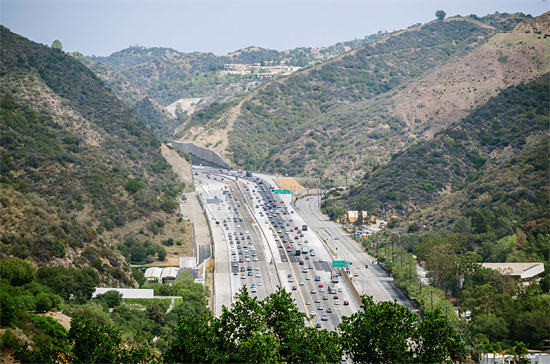
The bus line will roll though the Sepulvenda Pass via the new carpool lanes. Photo/Metro's The Source
Posted 9/18/14
This tunnel’s made for singin’
October 1, 2014
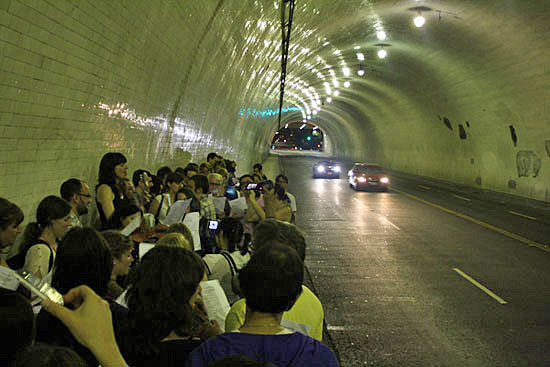
This tunnel, minus the cars, will be the site of one of CicLAvia's more unusual entertainment offerings.
If you’ve ever made your way through the 2nd Street tunnel in downtown Los Angeles, you know that it can be drab, grey, even a little spooky.
But this Sunday, thanks to the transformative car-free magic that is CicLAvia, the tunnel will turn into something else: a musical performance space echoing with the sounds of pedestrian- and cyclist-friendly numbers like “These Boots are Made for Walkin,’ ” Queen’s “Bicycle Race” and “Walkin’ on Sunshine.”
A group called Public Space Singalong is preparing to serenade those who pass through the tunnel—on bike or on foot—with lively tunes from the 1950s through the 1980s, as musicians provide accompaniment on guitar, violin, snare drum and accordion.
Jessica Cowley, the group’s founder, said everyone is welcome to join in—musical talent optional.
“It’s an opportunity to make music with other people in a really low-stakes situation,” Cowley said. “Everything gets lost when there are 40 people. You don’t even have to sing well.”
Cowley, an urban planner by trade, started the group in 2013 to use public spaces in a new way and bring back what she calls a lost tradition—creating music with the community. They’ve sung in the 2nd Street tunnel before, but this time the slower pace of bicycles and walkers should encourage more people to stop and have a listen. The pedestrian group Los Angeles Walks is coordinating their outing with the singers, and will arrive at noon to join in.
Public song is just one of the activities planned for Sunday’s open streets extravaganza. Bike safety classes, the Festival of Philippine Arts and Culture, interactive poetry, live music, and rock climbing are all part of the day’s offerings, which will be held throughout the event’s sprawling ”Heart of L.A.” route.
Food will be prominently featured, too. In August, CicLAvia’s organizers got mouths watering in advance with a food photo contest that featured dishes from eateries along the route. In addition to the restaurants, attendees can get their grub on at gourmet food trucks, which will be stationed at event “hubs,” or at the Historic Core Farmers Market, which is located nearby.
It all takes place from 9 a.m. to 4 p.m. this Sunday, October 5. This will be the 10th edition of CicLAvia, which regularly draws crowds in excess of 100,000. It won’t be the last, though—on December 7, the event heads to South L.A. before making its first-ever trip to the San Fernando Valley in the spring of 2015.
Posted 10/1/14
L.A. County’s animal magnetism
October 1, 2014
It’s a jungle out there.
Also a savanna, a desert and occasionally a rainforest.
The recent capture of a rare white cobra by L.A. County Animal Care and Control officers made headlines around the world as people marveled at the mysterious appearance of a dangerous creature more commonly associated with the Indian subcontinent than with Southern California suburbia.
But the cobra caper—a first for the department—was only the latest chapter in a long-running saga of exotic animal encounters in and around the nation’s most populous county.
“About a year ago, we had a very aggressive camel that attacked a man,” recalled Marcia Mayeda, the department’s director. “It was a Bactrian camel, the kind with the two humps.” The camel, named Wally, “belonged to a person who uses him for media shoots, movies and so forth. He had escaped from his pen outside of Palmdale, and was wandering the streets.”
And Wally has plenty of company.
“We get everything,” Mayeda said. “Every kind of reptile—caimans, crocodiles, alligators. People get these animals as pets and they get too big and too dangerous and then they can’t handle them anymore. They usually abandon them because they don’t know what else to do with them. The same with very large snakes.”
Beyond ill-advised household pets gone wild, Southern California disasters also smoke out some unlikely creatures.
“When the fires happen and we have to evacuate large numbers of animals, we go expecting to get horses, ponies or goats, or sometimes cattle. But there was a time there was a whole troupe of monkeys that needed to be removed from somebody’s property,” Mayeda said. “During the Station Fire, there was a man who had an African elephant and a rhinoceros and was asking us for assistance.” (He ended up finding another ride out of harm’s way for his animals.)
Over the past five years, the department has logged 202 tortoises, 125 lizards, 97 parrots, 24 gophers and 23 chinchillas.
Thirteen tarantulas and an equal number of frogs have passed through the system, along with 60 fish, 17 bobcats, 5 scorpions, three badgers and a weasel.
Animal control officers also have run into enough out-of-the-ordinary critters to populate a good-sized ark—including two alligators, two of the alligator-like caimans, two wolves and two muskrats—as well as a few animals with vocabulary-challenging names (like the serval, a spotted wild cat.)
It all happens against a backdrop of the more routine encounters that keep Los Angeles County shelters busy day in and day out.
While cobras, tarantulas, wolves and their ilk are classified as “other,” their numbers are dwarfed by the sheer number of daily encounters with dogs and cats. In fiscal 2013-14, for example, 6,362 animals categorized as “other” passed through county shelters, compared to 37,535 dogs and 28,027 cats. (Cougars and bears, which also show up with some frequency, are the province of the state Department of Fish and Wildlife.)
Rare beasts have been found in virtually every corner of the county. The Antelope Valley is a particularly rich source.
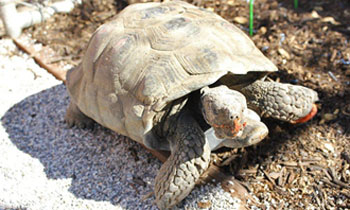
Reptiles, including this Sulcata tortoise, are no strangers to Los Angeles County animal control officers.
“You never know what people have up there,” Mayeda said. “They’re out in the middle of nowhere, they get all sorts of exotic animals and they’re zoned for it, too. A lot of the companies that provide animals for film and TV are located up there.”
Then there’s Thousand Oaks, a Ventura County community which contracts with the L.A. County Department of Animal Care and Control for services. Not only was the ordinarily quiet area the site of the Great Cobra Hunt; recently a capybara, known as the world’s largest rodent and weighing in at up to 100 pounds, turned up there as well.
There’s no designated exotic animal handler on the county staff. “Whoever catches the call, they’re going to have to figure it out or call for help,” Mayeda said. “Nobody’s ever handled a cobra before. We’ve handled plenty of rattlesnakes, but cobras are different—faster and a lot more dangerous.”
The white cobra is now safely under quarantine at the San Diego Zoo. And, in case you’re wondering, Wally the rogue camel has been relocated to a more secure facility—in Ventura County.
Posted 10/1/14




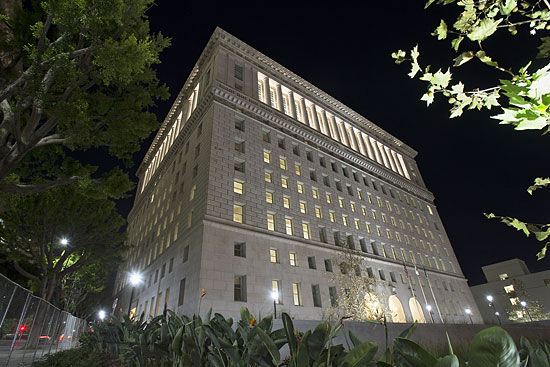
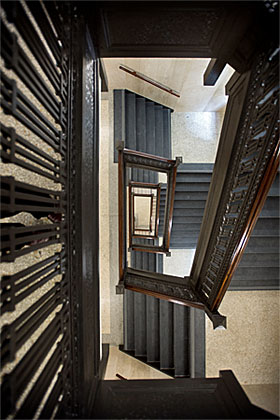
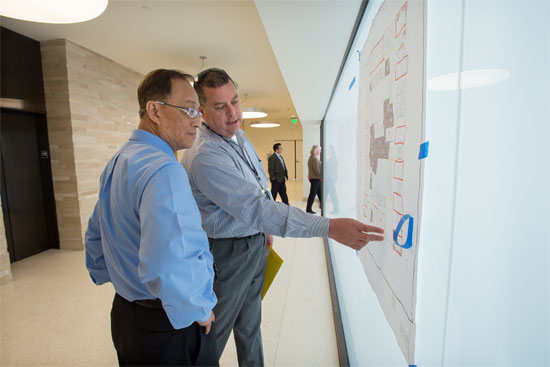
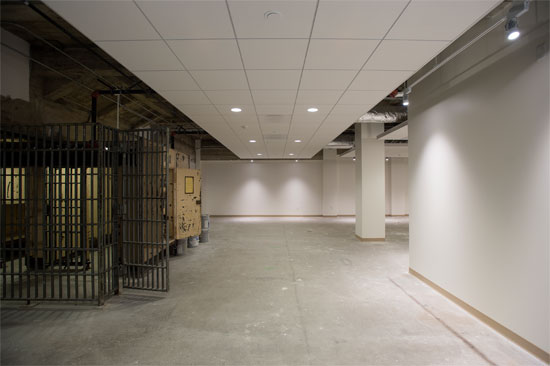
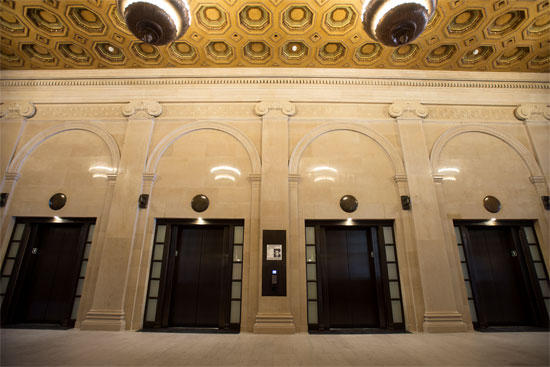
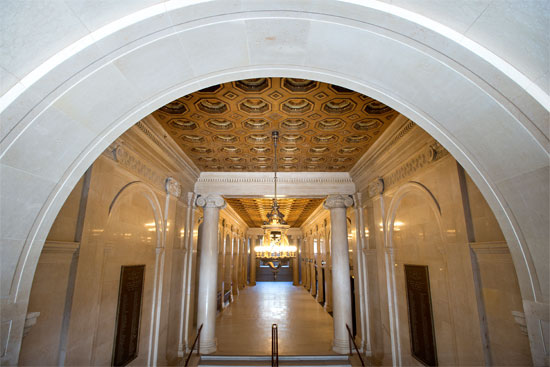
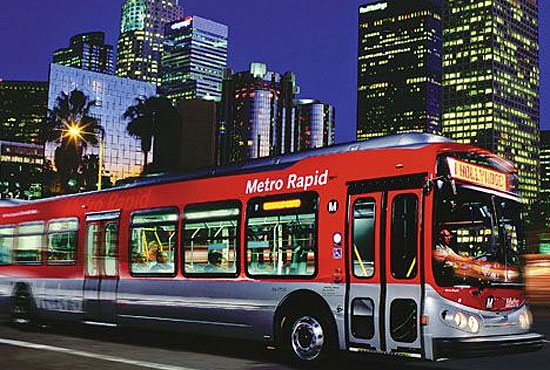
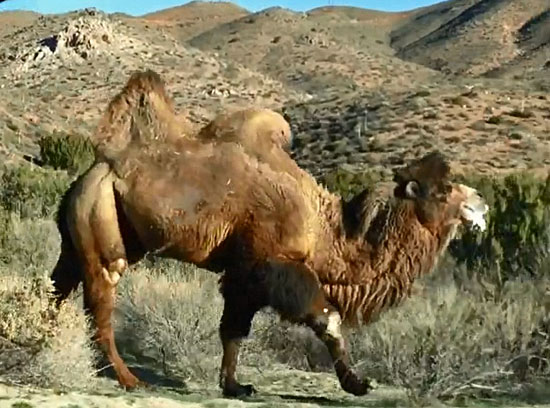
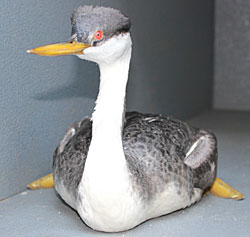
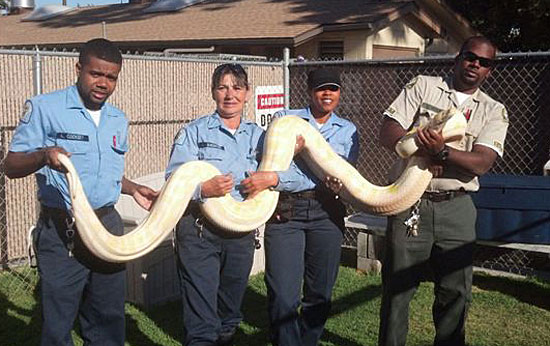





 Check for the latest closure information
Check for the latest closure information








